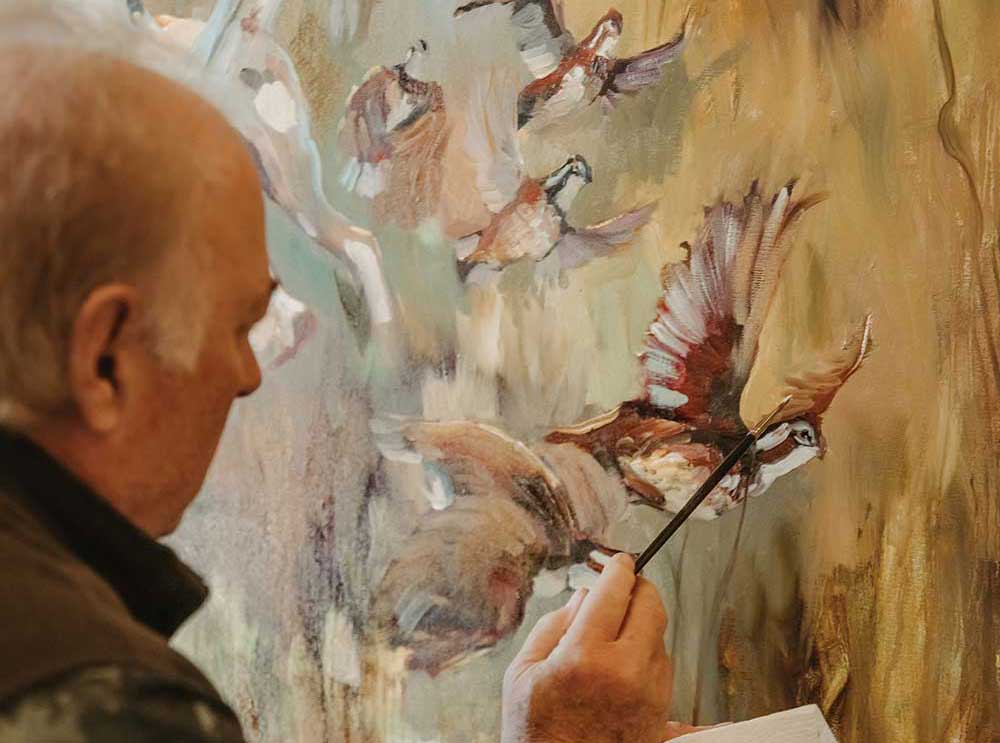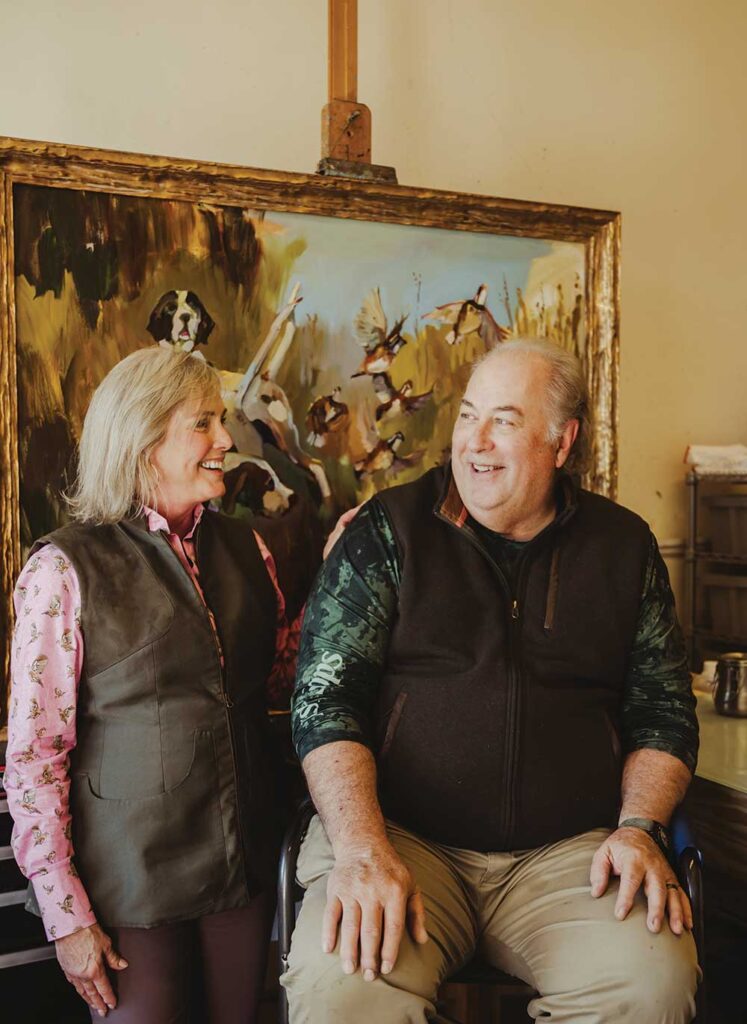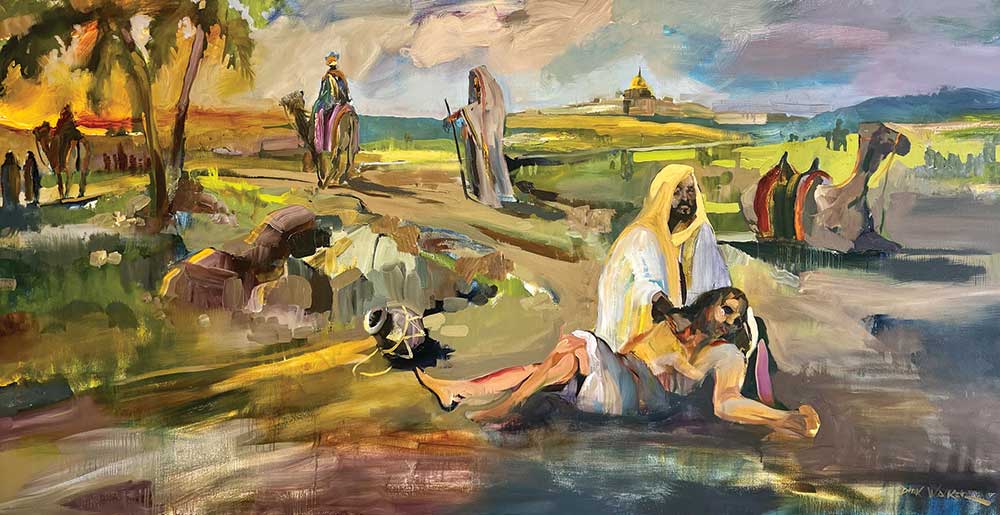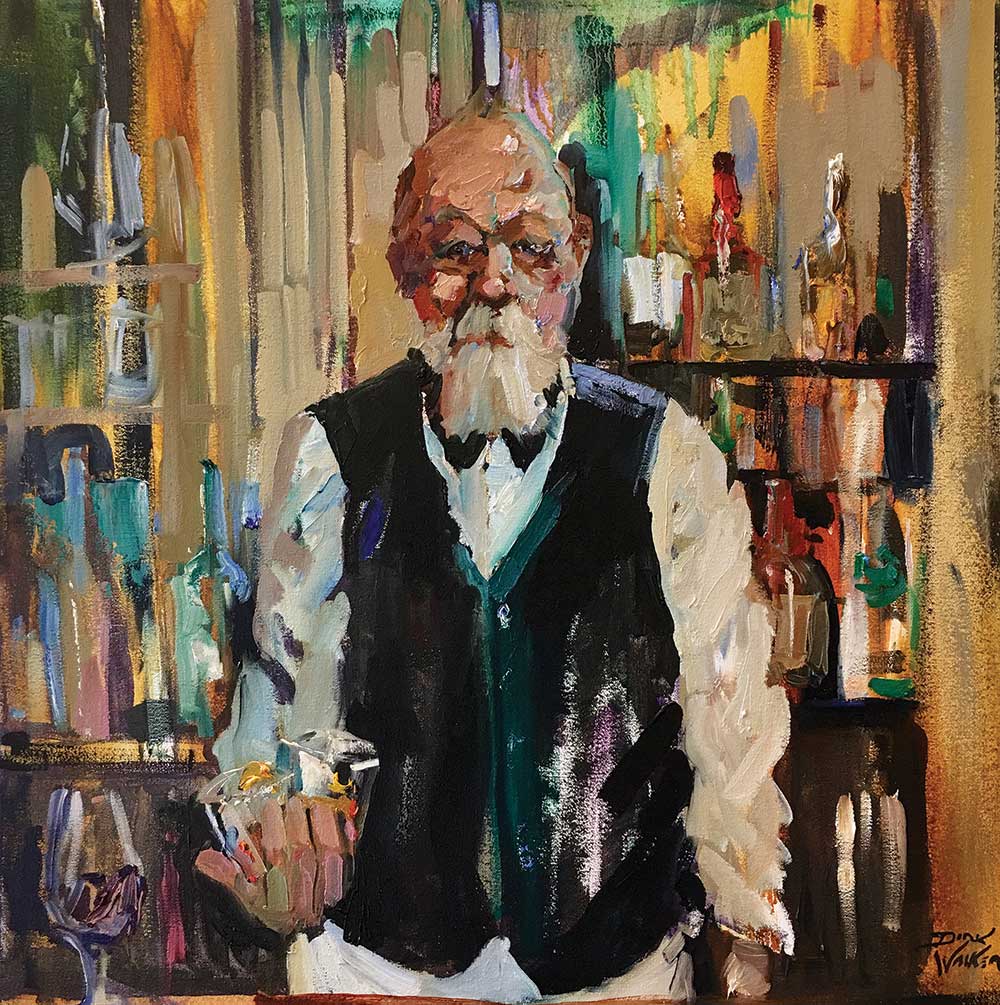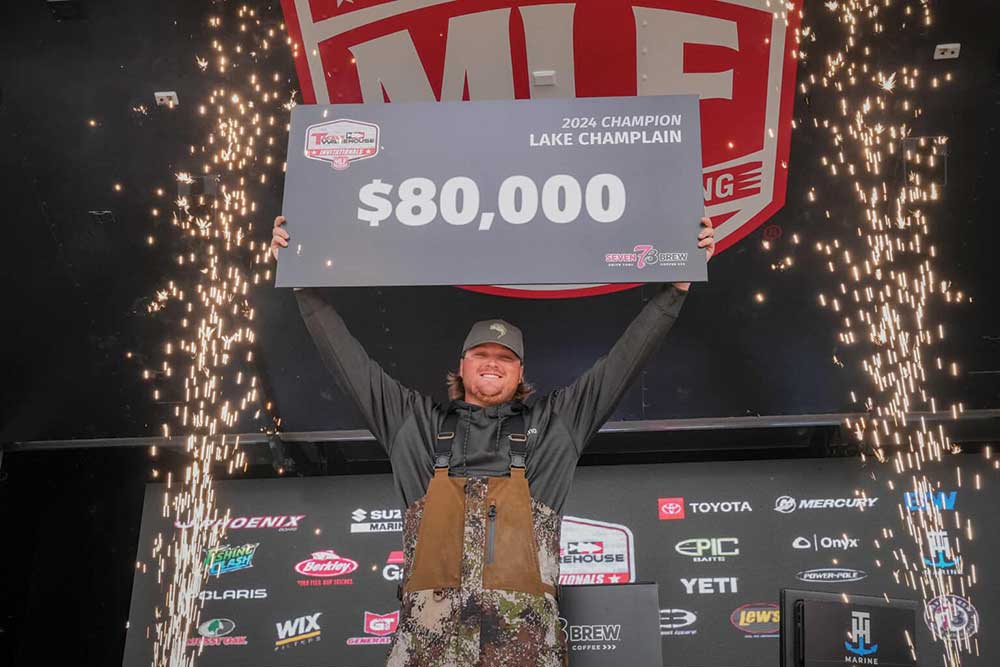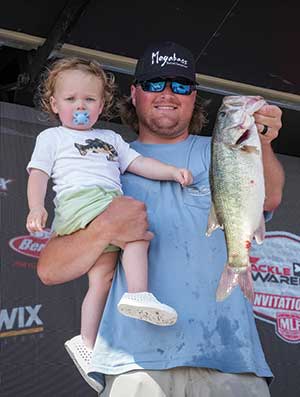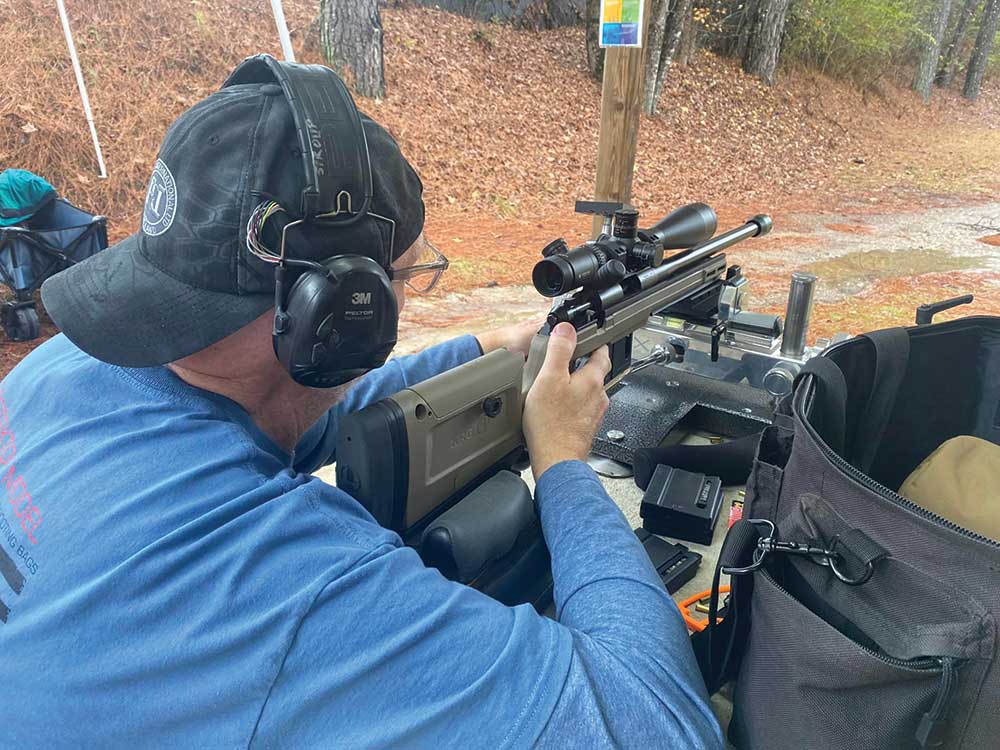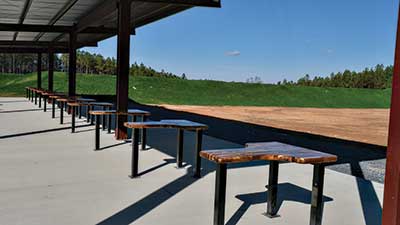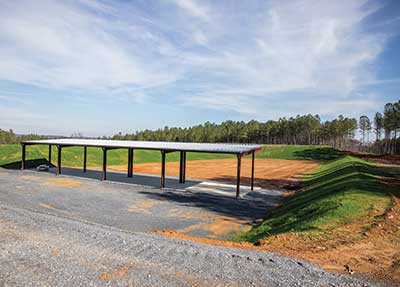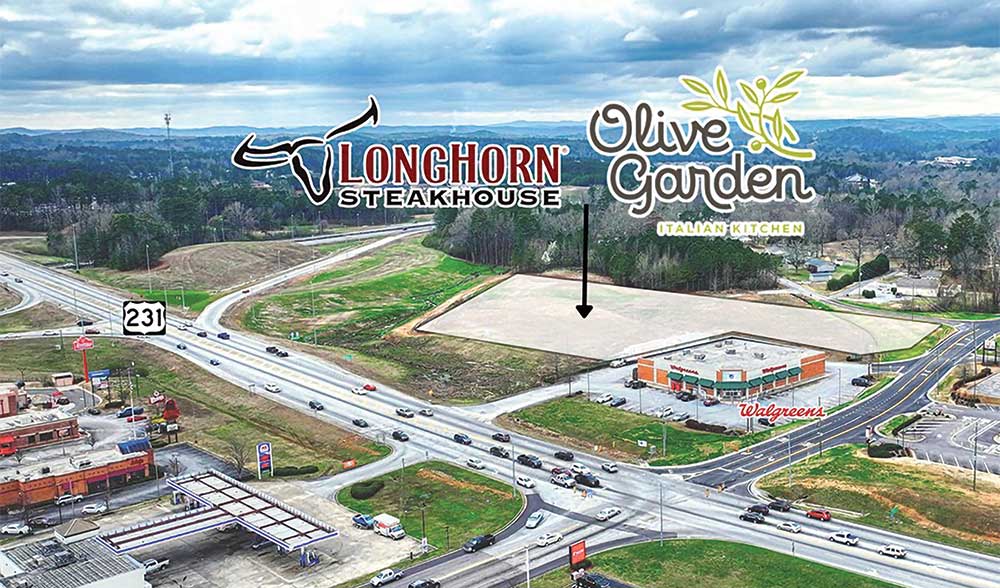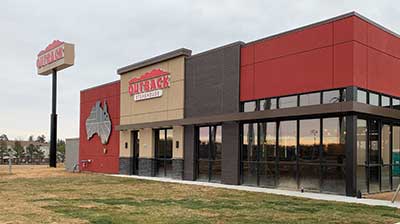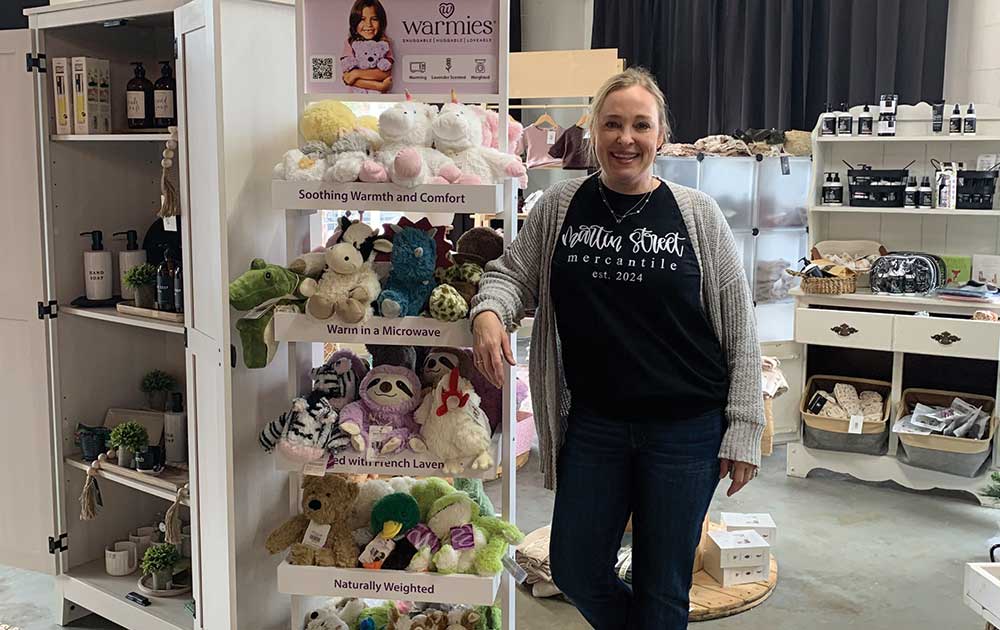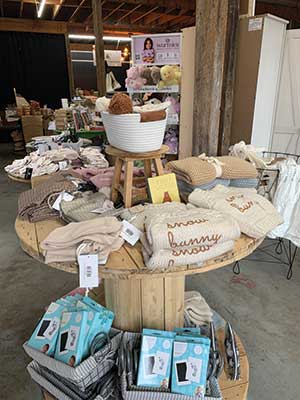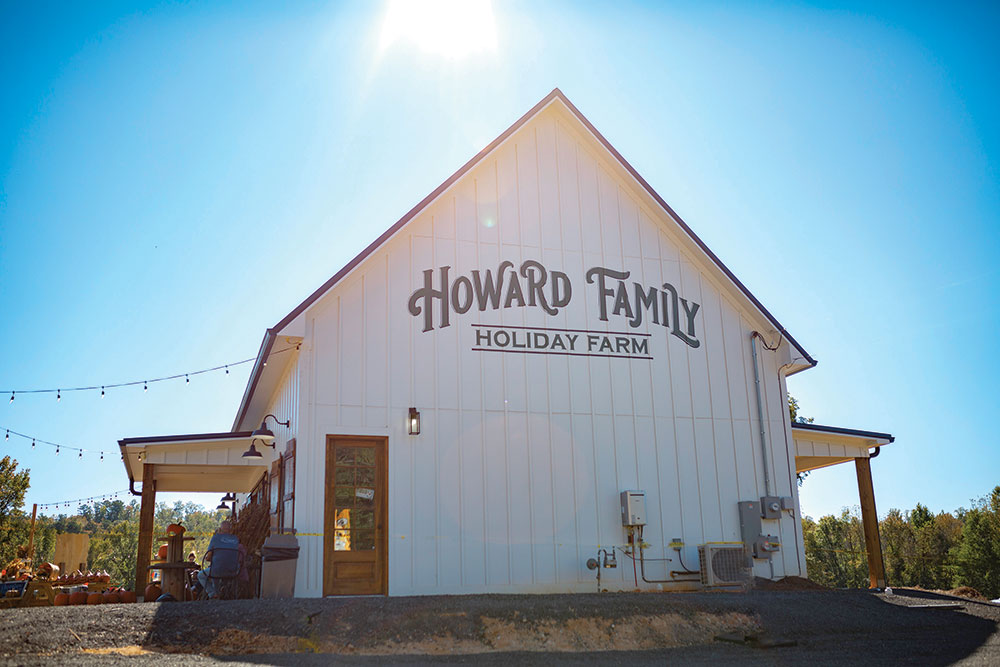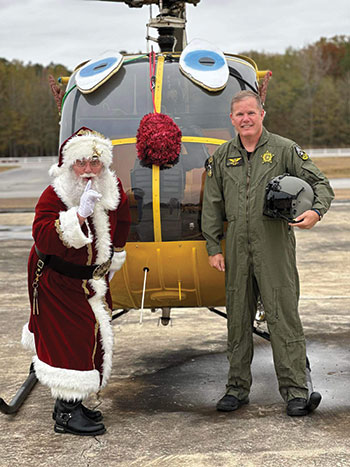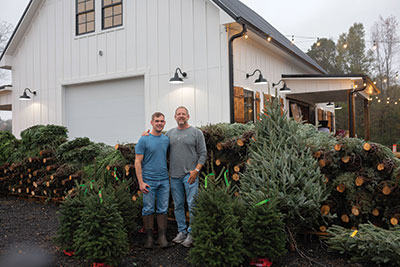Life through the eyes of an artist
Story by Scottie Vickery
Photos by Mackenzie Free
Dirk Walker’s artwork has found homes all over the world. His paintings hang in houses, churches, businesses, corporate headquarters and sports stadiums. They grace walls all over the country and faraway places like Germany, Denmark, Australia, and the United Kingdom.
It all started with his own bare walls.
“I wanted to buy art for our home,” said Walker, who lived in Birmingham at the time. His search took him to the Loretta Goodwin Gallery, and by the time he left, Walker, who worked in banking at the time, couldn’t shake the feeling that he was meant to be an artist.
“I don’t know why I thought I could do it, but something appealed to me about trying to learn how to paint,” said Walker, who has had a studio in downtown Pell City for 11 years.
Fans of his work are awfully glad he did. Walker’s paintings, both oils and watercolors, are known for their bold colors, rich texture and loose brushstrokes. His subject matters are varied: he has collections ranging from landscapes and city scenes to his spiritual series. He also paints sporting and hunting scenes, art focusing on the growing bourbon culture, and whimsical subjects like Santa Claus.
“The variety of things I like to do just keeps me fresh in all of them,” he said. “I’m not doing the same thing all the time – that would drive me bonkers. A lot of people can’t say they love what they do, but I get a lot of gratification from it. Once I get in to doing a painting, everything else just sort of goes away.”
Finding purpose
There were signs early on that Walker had the makings to be a great artist. Growing up in Birmingham, he watched his father dabble in watercolor, and his own high school work caught the attention of his art teacher. She encouraged him to pursue it, but his interest and talent lay dormant for years.
After graduating from Vestavia Hills High School, Walker earned a degree in industrial design at Auburn University and that helped provide a foundation in drawing and perspective. “I did a little design work right out of college, but I had the opportunity to go with the bank, and it was a better option for raising a family at the time,” he said.
After the visit to the gallery, however, Walker decided to give in to the pull. His first painting was a still life. “It was horrible, looking back on it now,” he said with a laugh.
Still, he took it to back to the gallery to be framed, and Loretta Goodwin, who would become a dear friend and mentor, saw something he didn’t. She asked him who had painted the piece. “I said, ‘I did,’ and she said, ‘Can you do it again?’”
It took him about two years to create something he wanted to show her. “It was the most nerve-wracking experience,” said Walker, who started painting with oils. “I circled the block two or three times because I wanted to throw up I was so nervous.”
The first few times he showed Goodwin his work, she told him, “You’re not quite there, keep trying,” Walker remembered. “I’d tuck tail and go back home and stay at it. Eventually, I got to the point where she thought she could do something with it.”
Goodwin was a tremendous influence on Walker. “She loved the arts, she loved local artists, and she did so much to promote the arts in Birmingham. We formed a deep friendship where we talked as much about the business of art as we did the painting process. It instilled in me a love of both.”
She wasn’t his only influence. Hungry to learn, Walker sought guidance and inspiration from Alabama artists John Lonergan, who taught art at Pell City High School for 25 years, and Tom Black, who grew up in Gadsden and lived in Pell City before moving to Arizona. “I would go up to Tom’s studio and just watch him mix color and see what he’d do. I was too nervous to paint around anyone,” he said.
Walker later met and took workshops from David Leffel and Sherrie McGraw, both artists who taught at the Art Students League of New York. His early style was similar to those who had influenced him – “very much the Old Masters, very much the old Renaissance look,” Walker said. “It was the play of shadows and light, light flowing over objects.”
Still working at the bank while pursuing his art, Walker didn’t have the luxury of painting outside during the day and taking advantage of the natural light. “At night, I’d go down to my studio and set up a still life so I could control the light,” he said.
Walker’s work soon grew a following, and in addition to the Loretta Goodwin Gallery, his art has been featured in eight galleries across the country. When his job went away after a bank merger, Walker bought Goodwin’s gallery, which he owned for 20 years before becoming a full-time artist.
Changing times
Walker, who now lives in Cropwell with Debbie, his wife of eight years, has said that painting “is a lifelong struggle, but one that is well worth the journey.” He said he loves the fact that he continues to grow and change as an artist.
“It’s something you never completely learn,” he said. “I think that’s one of the big appeals for me. Forty years later, I’m still learning and experimenting and making mistakes.”
In fact, Walker said his willingness to continue to explore techniques and subjects and experiment with color has been a big part of his success. “So many artists just kind of get stuck and they wonder why their art isn’t being accepted the way it was maybe years earlier,” he said. “I learned how to watch what people responded to, and through the years, it impacted how my style changed.”
Walker’s portfolio soon expanded to iconic landmarks. His work includes Alabama landmarks like Sloss Furnaces, the Alabama Theatre, Vulcan, the Pell City Depot and the Mobile Bay Lighthouse. He eventually added scenes from Atlanta, as well as places like the Lincoln Memorial, the Brooklyn Bridge and the Eiffel Tower.
“I started off painting very tight, very traditional, and then I wanted to go a little more abstract, a little more impressionistic,” he said, adding that one of the first steps was adding nondescript figures to some of his landmark paintings. “Through the years, I kept pushing in that vein.”
Walker started experimenting with sporting and hunting scenes after his son, Geoffrey, who works in the sporting goods industry, showed his artwork to Kevin and Kathleen Kelly, owners of Kevin’s Fine Outdoor Gear & Apparel. Based in Thomasville, Geogia, it is one of several retailers who represent his work.
“They asked if I ever did hunting scenes, and Geoffrey said, ‘I don’t know; I’ll check,’” Walker said. “He called me that night and said, ‘Dad, I think you need to try doing some hunting scenes.’”
Walker took his son’s advice, and the collection has been wildly popular, thanks in part to his abstract realism style. “I think my style was a really fresh approach,” he said. “Most of the wildlife art you see is very tight, very realistic, very static. Mine was loose and colorful, and I think it caught people at the right time. There’s been a tremendous response to it. It’s just kind of blown my world up.”
Walker, who lived on Logan Martin Lake for years before he and Debbie moved to their gentleman’s farm in Cropwell, has fond memories of fishing and hunting growing up and eventually fishing with his own kids. “We’ve got so many great memories of being on the water,” he said. “That’s one of the really neat things about that genre of work. People connect to it on an emotional level. They want a painting of a dog like they had, or they hunted with their kids. It evokes a lot of memories.”
About four years ago, Kelly approached Walker about doing limited edition prints of some of his paintings. He was reluctant at first, but he realized that people who couldn’t or wouldn’t invest in original art might spend $300 or $400 on a print.
They began offering a line of collector’s closed edition prints, and “we get orders almost every day,” he said. Debbie handles that side of the business, and “it has really broadened our exposure,” Walker said. “Now I get calls to do commissions from all over the country and from other countries, as well.”
Higher calling
Another series that has been personal for Walker is his spiritual collection, which includes depictions of Jesus’ baptism, the Last Supper, the feeding of the 5,000, and the crucifixion. The series was born of his own personal faith and struggles.
Raised in the church, Walker said “if the doors were open, we were there.” As an adult, he went through a period where he floundered a bit, but “something was calling me back to the church.” Not long after he returned, he felt ta strong desire to paint scenes from the Bible.
“Being a person of faith, I think everyone is given gifts on some level, whether it’s music, art, writing, whatever,” he said. “This is something that’s He’s given me, and it’s a way for me to kind of give back and witness a little about my faith. I try to portray something in a way that might cause someone to want to sit and think, and if it also helps someone else find the Lord or deal with issues, that’s a blessing for both parties.”
Walker spent a lot of time on his spiritual art the past two years after being commissioned by Vestavia Hills Methodist Church to paint a series of scenes portraying the life of Christ according to the Gospel of John. Baptist Health also commissioned artwork for all of its hospitals in Alabama.
He also was commissioned to do several large pieces, including a portrayal of Christ in the Garden of Gethsemane, for collectors in Australia and Germany. The connection was largely the result of his online presence.
“Without the internet, that never would have happened,” he said. “It’s kind of a God thing. He’s using this voice of mine to reach people literally around the globe. It really makes me very humble and proud.”
A new medium
While he has painted with oils for most of his career, Walker was moved to study a new medium about six years ago when he introduced his bourbon series. “Bourbon is such a collectible thing right now, and they’re a lot of fun to do,” he said of the paintings. “Watercolor is sort of the perfect medium for that subject.”
Walker said he strives to create the same kind of look as his oil paintings – the boldness of color, for example – so his approach is a little different than that of traditional watercolorists. While most watercolors tend to have a lot of transparency, he often uses gouache, which is similar to watercolor, but more opaque. The result is paintings with more dimension and vibrancy. “My technique is a little different in that regard,” he said.
The challenge is part of the allure. “Watercolor is a hard medium,” he said. “I enjoy it equally as much as oil, but I’m still kind of learning as I go.”
Walker, his own toughest critic, has a stack of watercolors in his studio that he has discarded. “You’re never completely satisfied no matter how good a painting might turn out,” he said. “I can go back and look at a painting I did yesterday or 10 years ago and see things I wish I’d done differently. Even to this day I’m frustrated by why one painting works and one doesn’t.”
Finding balance
At 70, Walker has no plans to stop painting. “Debbie and I work really hard at this, and I’m up in the studio almost every day,” he said. “I enjoy it, though, and it’s something I hope I can do for years to come.”
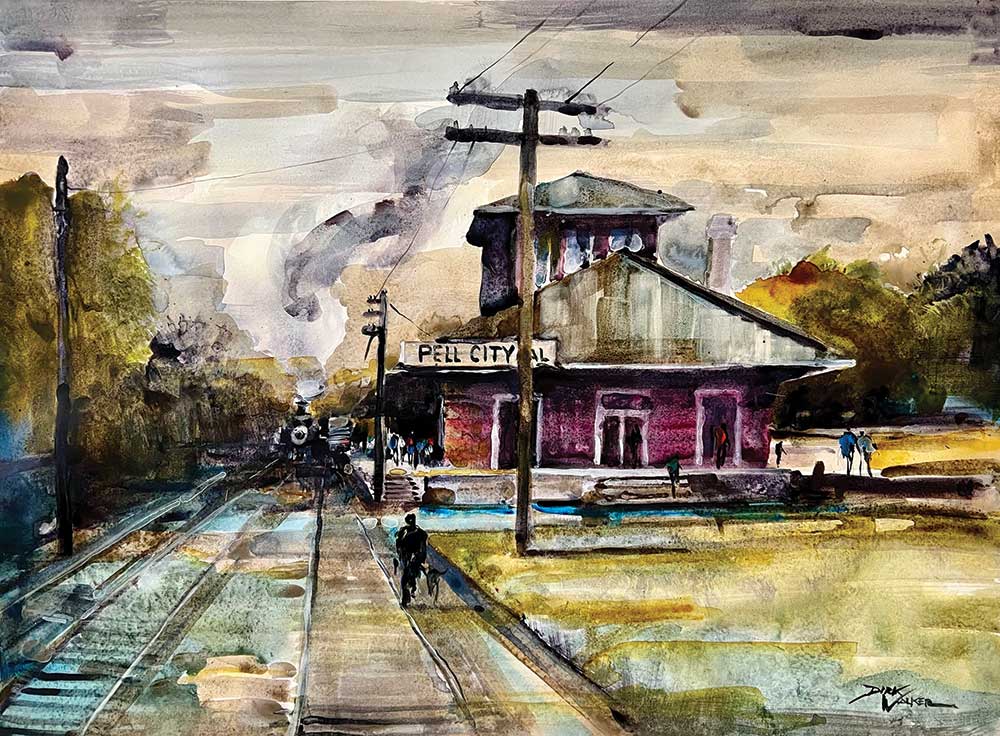
They do make time for other pursuits, however. Debbie, who traveled the world in her younger years is trying her best to help Walker catch the travel bug, and being with family will always be a priority for both of them.
Their combined family is a big one. Walker has four children, Debbie has two, and there are nine grandchildren and three great-grandchildren with another on the way. One of his greatest joys has been creating scenes that mean something to them and will be around for generations.
“I’m so proud that my kids have been able to see me develop, although they give me grief about it,” he said. “If they ever think my ego is out of check, they bring me back down to earth. But it’s so cool because they’ve all told me, ‘Dad, you want to give us something for Christmas, give us a piece of your art.’ That, as a parent, is awesome.”
Chances are, there are a lot more Christmas gifts in their future. Walker, who said he can’t see ever retiring, will never get too far from his red Craftsman tool cabinet that holds brushes and paint and other tools of his trade.
“I once read, ‘Art is a delicate balance between the visual concept and each artist’s technique,’” Walker has said. “After years of chasing that artistic balance, it is the anticipation of the struggle that keeps me coming back to the canvas.” l











